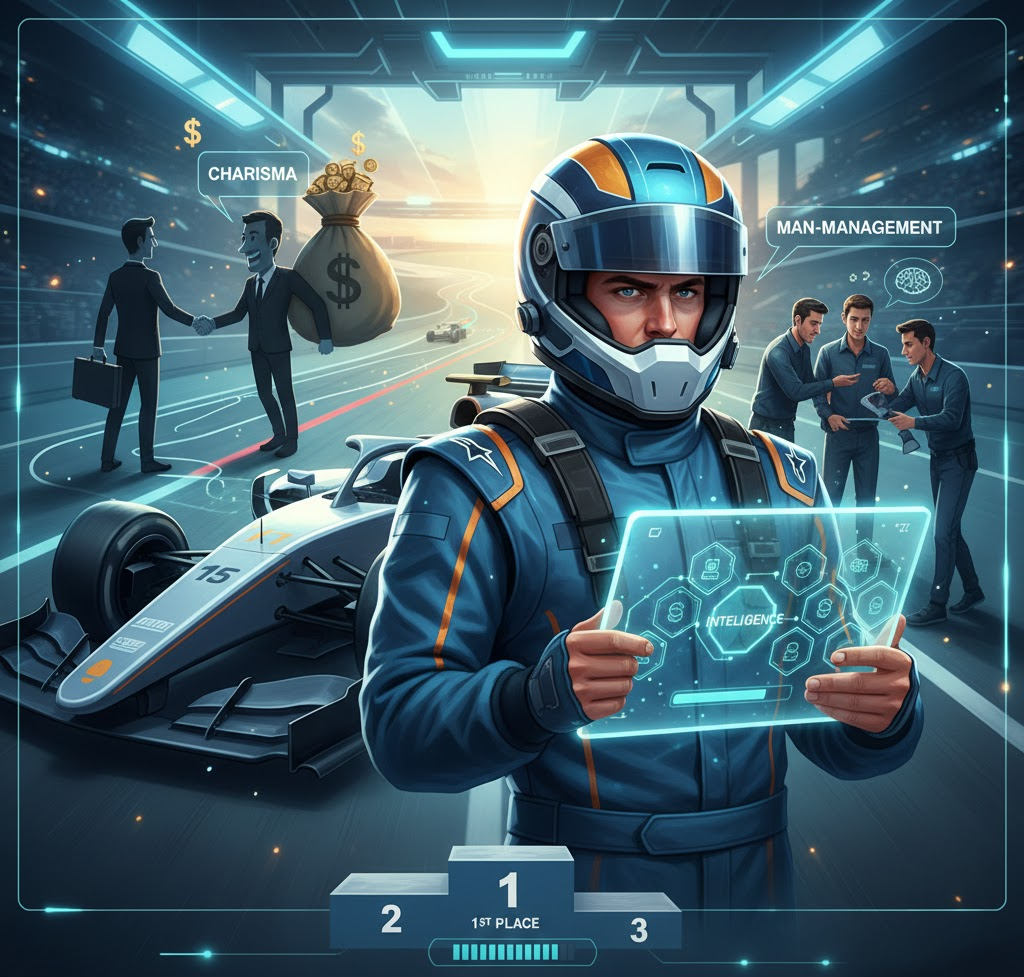 13.11.2025 - My Racing Career is a popular online sports management game. You control a driver's journey from novice to champion. Success demands smart attribute allocation and strategic career path decisions. This article guides you through building the perfect driver for long-term dominance in the game.
13.11.2025 - My Racing Career is a popular online sports management game. You control a driver's journey from novice to champion. Success demands smart attribute allocation and strategic career path decisions. This article guides you through building the perfect driver for long-term dominance in the game.
Building a top-tier driver in My Racing Career requires strategic planning. Focus on training speed, financial savvy, and essential on-track skills. Early decisions impact your driver's entire career trajectory and earning potential. Maximize learning ability and secure strong sponsors from the outset.
Prioritize Intelligence for Rapid Growth
Long-term success hinges on maximizing your driver's training speed. The most crucial attribute for this is Intelligence, or the ability to learn. Higher Intelligence means faster skill progression across all categories. You must prioritize this attribute immediately.
Start your driver's career with the maximum possible Intelligence rating. Your immediate goal should be to improve this attribute to 100 as quickly as possible. Every training point invested here yields dividends later. Fast learning allows your driver to adapt rapidly to new challenges and accelerate past rivals. Neglecting Intelligence creates a permanent drag on your driver's potential growth. A driver with 100 Intelligence gains skills significantly faster than one with 80, translating directly to earlier peak performance.
The Financial and Personnel Advantage: Charisma and Man-Management
Building a perfect driver extends beyond pure driving skills; it involves shrewd management. Your driver needs exceptional coaches to maintain a high training pace. High-quality coaches demand high salaries. Securing the necessary funds requires superior sponsor offers.

Charisma is vital for attracting better sponsors. A driver with high Charisma is more appealing to top companies, resulting in larger financial contracts. These contracts directly fund better coaches and equipment upgrades, accelerating the driver's development cycle. Aim to develop Charisma early, alongside Intelligence, to create a sustainable financial model.
Furthermore, a top manager needs strong employees. Man-Management skills are essential for getting the best performance from your hired staff, including mechanics and engineers. While a high Man-Management rating may not directly improve a car's speed, it ensures that your team operates at peak efficiency. This optimized team performance provides an indirect but significant competitive advantage on the track. Invest points here to maximize the return on your employee investment.
Essential Driving Skills for On-Track Success
Ultimately, race results define a driver's reputation and financial future. Focus on the core driving attributes necessary for winning races in your chosen series.
The two most impactful on-track attributes are Driver Pace and Ideal Line. Driver Pace dictates the raw speed and competitiveness of your driver against the field. Ideal Line affects the driver's ability to maintain the fastest path around the track, minimizing time loss. Poor Ideal Line proficiency results in slower lap times, regardless of high Pace. Prioritize these two skills heavily, as they are the direct drivers of race performance and championship potential.
The Support Skills: Mental and Technical
Driving skills need supporting attributes to be fully effective. Mental skills ensure your driver can fully utilize their Pace and Ideal Line abilities under race pressure. Attributes like Consistency, Concentration, and Reaction Time prevent costly errors, improve tire management, and ensure peak performance throughout a full race distance. A driver with high Pace but low Mental skills will frequently make mistakes, costing time and positions.
Technical skills are crucial for fine-tuning the race car. These attributes, such as Setup Skill and Feedback, help your engineers create the perfect car configuration for each track. A driver with excellent Technical skills can provide precise feedback, allowing for an optimal race setup. This can yield a performance boost often measured in tenths of a second, which is critical in close competition. Do not underestimate the small, cumulative gains from a perfect car setup.
Strategic Season Series Selection
Your choice of season series is a critical management decision that impacts driver rating and sponsor appeal. The Driver Rating is a measure of your driver's perceived quality and marketability.
If the chosen series is too tough, your driver will achieve poor results. Low race finishes slow the growth of the driver rating, making the driver less attractive to lucrative sponsors. Consistent failure breeds stagnation.
Conversely, a series with excessively weak competition helps achieve easy victories. However, the game mechanic ensures that results against weaker opponents are less valuable. The resulting growth in the driver rating will be slow. The key is to find the sweet spot: a series where your driver can achieve consistent top-five finishes, perhaps winning a few races, but still facing significant competition. This balance maximizes valuable race experience and ensures a strong, steady growth in Driver Rating, making the driver highly appealing to top-tier sponsors.
Efficient Training Management
Training efficiency decreases as an attribute becomes very high. When a trained skill reaches a high level, the training gains slow down considerably. This reduced efficiency means the training points yield less return.
A smart manager recognizes this slowdown and adjusts the training focus. It makes strategic sense to switch training to a weaker skill, even if that skill has a lower overall impact on race results. The rapid initial gains on the weaker skill provide a more efficient use of training time than the slow, grinding gains on an already high skill. Maintain a balanced approach to prevent any single attribute from becoming a severe bottleneck in overall training progression.
Finally, ensure all training aligns with your driver's chosen career path: circuit racing, motorcycle racing, or rally. Each discipline prioritizes different attributes. Circuit racers need high Pace and Ideal Line. Rally drivers may require more focus on car control and technical setup for varied terrains. Motorcycle racers have unique demands for balance and precision. Tailor your training plan to the specific demands of the sport to maximize on-track results.




